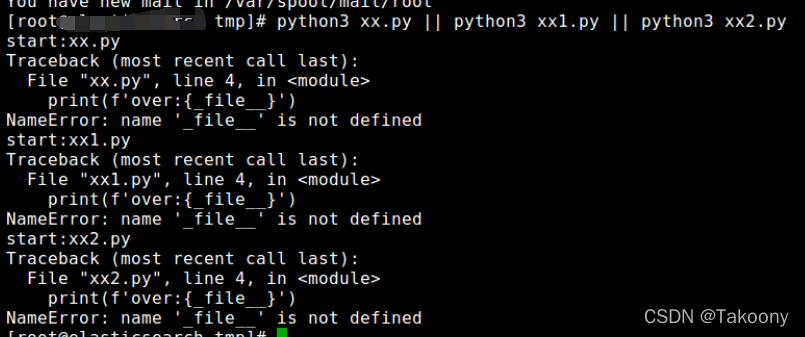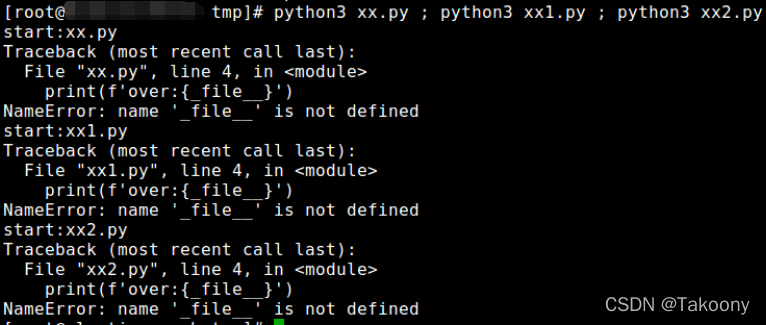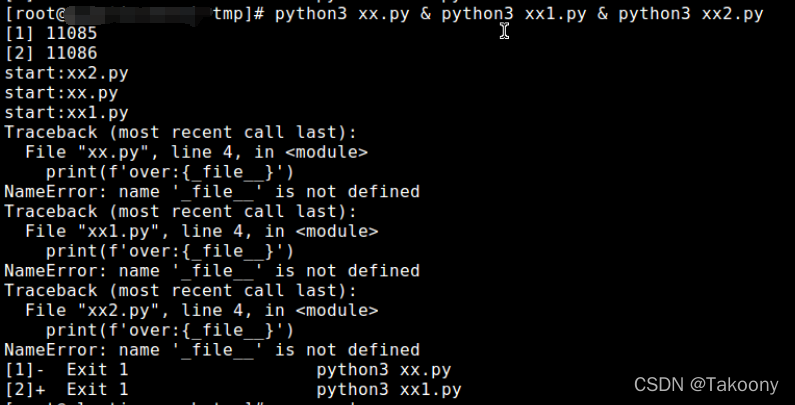一、 四种方法:
python xx.py && python xx1.py && python xx2.py # 前一个运行成功后,才运行后面一个
python xx.py || python xx1.py || python xx2.py # 前一个运行失败后,才运行后面一个
python xx.py ; python xx1.py ; python xx2.py # 前一个运行结束后(无论成功与否),才运行后面一个
python xx.py & python xx1.py & python xx2.py # 并行执行,独立的关系
二、实验–执行失败的代码:
import time
print(f'start:{__file__}')
time.sleep(10)
print(f'end:{_file__}')
&&
python xx.py && python xx1.py && python xx2.py # 前一个运行成功后,才运行后面一个

||
python xx.py || python xx1.py || python xx2.py # 前一个运行失败后,才运行后面一个

;
python xx.py ; python xx1.py ; python xx2.py # 前一个运行结束后(无论成功与否),才运行后面一个

&
python xx.py & python xx1.py & python xx2.py # 并行执行,独立的关系
效果等同于,多个独立的命令行,三个进程:
python xx.py
python xx1.py
python xx2.py

实验-执行成功的代码
&&
python xx.py && python xx1.py && python xx2.py # 前一个运行成功后,才运行后面一个

||
python xx.py || python xx1.py || python xx2.py # 前一个运行失败后,才运行后面一个

;
python xx.py ; python xx1.py ; python xx2.py # 前一个运行结束后(无论成功与否),才运行后面一个

&
python xx.py & python xx1.py & python xx2.py # 并行执行,独立的关系

三、结论
结论1:&& || ; 顺序执行,单进程; 而 & 多进程,并行执行;
结论2:&& || ;这三个符号均要等待上一个执行完毕后,才执行下一个;&&为执行成功后,||为执行失败后,;不管成功与否均要执行;
